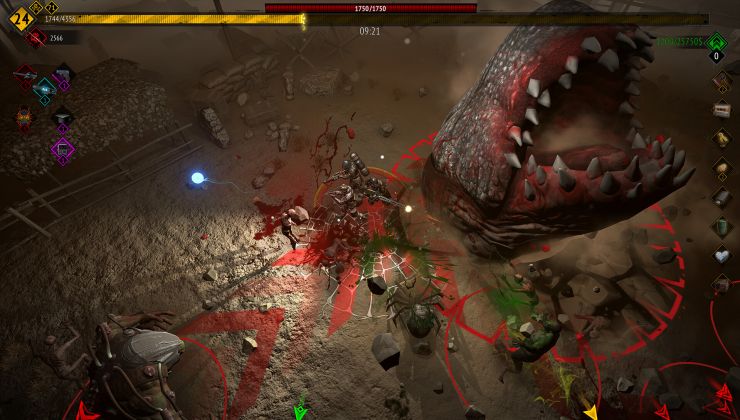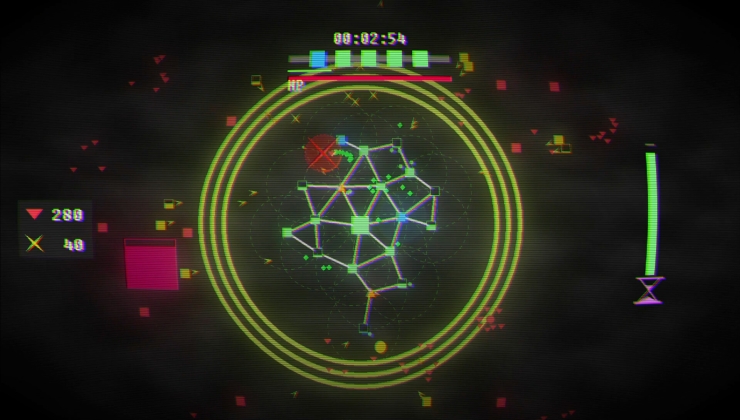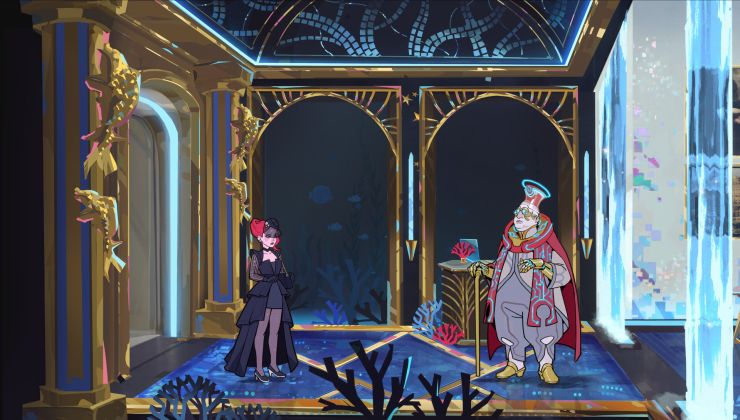GNOME has received recognition as a Public Interest Infrastructure, and so they've been awarded €1M from the Sovereign Tech Fund.
"GNOME has played a major role in the Free Software, Open Source, and Linux desktop ecosystem for more than 25 years. The GNOME community is dedicated, diverse, and dynamic. The GNOME desktop and apps are used by millions of people and its technologies are deployed on countless devices and products.
We are excited to see the GNOME project recognized as critical digital infrastructure and are grateful to Sovereign Tech Fund for supporting our initiatives for GNOME and the wider Linux desktop." — GNOME Foundation
The GNOME Foundation say this money will go towards these projects:
- Improve the current state of accessibility.
- Design and prototype a new accessibility stack.
- Encrypt user home directories individually.
- Modernize secrets storage.
- Increase the range and quality of hardware support.
- Invest in Quality Assurance and Developer Experience.
- Expand and broaden freedesktop APIs.
- Consolidate and improve platform components.
See the announcement here.
Some you may have missed, popular articles from the last month:
All posts need to follow our rules. Please hit the Report Flag icon on any post that breaks the rules or contains illegal / harmful content. Readers can also email us for any issues or concerns.
It's always a good notice when an open-source project gets more support. I'd love if more desktops got more funding though. I love Gnome but there are more who deserve it. And that's a lot of money!
I'd love to see more love towards KDE. They're doing an awesome job. I think at least it has some support from Valve and people like us who also love them. :tongue:
I ended my distro-hopping now I'd love if I could end my desktop-hopping. :grin:
I'd love to see more love towards KDE. They're doing an awesome job. I think at least it has some support from Valve and people like us who also love them. :tongue:
I ended my distro-hopping now I'd love if I could end my desktop-hopping. :grin:
1 Likes
Quoting: MinuxIt's always a good notice when an open-source project gets more support. I'd love if more desktops got more funding though. I love Gnome but there are more who deserve it. And that's a lot of money!I'm the other way around. I'm fully settled on KDE, but I'd still like to find the ideal distro!
I'd love to see more love towards KDE. They're doing an awesome job. I think at least it has some support from Valve and people like us who also love them. :tongue:
I ended my distro-hopping now I'd love if I could end my desktop-hopping. :grin:
As for donating to KDE, here's [the official link](https://kde.org/community/donations/). I did the base amount (£25/quarter), but hoping to up it next year! Or you can do one-off donations there too.
But you're right, there's nothing like proper corporate funding, and I hope KDE gets some love eventually.
[Edit: Wow - phone predictive way off. Corrected!]
Last edited by scaine on 17 Nov 2023 at 7:36 pm UTC
2 Likes
Quoting: GuestEU is Germany (and France). Without them there is no EU. So German initiative = essentially EU initiativeDon't think I can agree with that. There are plenty of government initiatives that are German only and the Sovereign Tech Fund is definitely one of them. No EU oversight at all. Founded in Germany, by Germans, funded entirely through the German Federal Ministry for Economic Affairs and Climate Action.
Conversely, the EU was founded by about 6 or 7 countries - I forget who now. Sure Germany is one, along with France, Netherlands... Belgium presumably? Italy, I think?
If you think that a Germany initiative is the same as an EU initiative... well, you're wrong. Germany really, really doesn't have free reign to dictate policy to the EU's 27 member countries. And if any of those member countries thought they could dictate how the Sovereign Tech Fund is spent, they'd be told (politely, I'm sure) where to go.
1 Likes
Quoting: GuestThat's a bizarre take, honestly. Germany is certainly the most "profitable" country (ie, has the largest GDP), but per capita, Luxemberg is a bigger contributor (oh - and they're the 6th founding member, btw).Quoting: scaineIt doesnt matter who founded the EU, what matters is who pays for it. And Germany/France mostly pay for it, therefore they rule it. Pull Germany out of the EU and the EU is no more or becomes ineffectual as to be rendered non existent.Quoting: GuestEU is Germany (and France). Without them there is no EU. So German initiative = essentially EU initiativeDon't think I can agree with that. There are plenty of government initiatives that are German only and the Sovereign Tech Fund is definitely one of them. No EU oversight at all. Founded in Germany, by Germans, funded entirely through the German Federal Ministry for Economic Affairs and Climate Action.
Conversely, the EU was founded by about 6 or 7 countries - I forget who now. Sure Germany is one, along with France, Netherlands... Belgium presumably? Italy, I think?
If you think that a Germany initiative is the same as an EU initiative... well, you're wrong. Germany really, really doesn't have free reign to dictate policy to the EU's 27 member countries. And if any of those member countries thought they could dictate how the Sovereign Tech Fund is spent, they'd be told (politely, I'm sure) where to go.
It only takes France and Italy (#2 and #3 in terms of GDP) to contribute more to the EU than Germany, let alone the 23 OTHER member countries that make up the 16 trillion the EU is valued at.
It would certainly rock the EU if Germany left, but I don't understand your point here. You seem to think that because it would rock the EU if they left, that Germany just get to have their own say all the time? That's complete nonsense.
Honestly, maybe I'm missing your point, but the bit I'm arguing here is that you think that Germany policy is EU policy. It's not, it never has been.
Edit:
I need to add - GDP and EU member contribution rates don't mean squat in terms of voting for EU regulation. That's calculated, mostly by population, through the "[Treaty of Nice](https://en.wikipedia.org/wiki/Voting_in_the_Council_of_the_European_Union#Treaty_of_Nice_(2004%E2%80%9314/17))", in which Germany has around a 9% say on any given vote.
To put that into perspective, if Germany came along with a piece of legislation that it wanted to become EU law, they'd have to convince either the top eleven countries in that table I linked, or a LOT of the remaining countries.
But it rarely comes to that. Something like 75% of all legislation proposed is unanimously agreed, probably because of the robust challenges that happen before the voting.
Last edited by scaine on 20 Nov 2023 at 5:03 pm UTC
2 Likes
Quoting: scaineThere's a [former Valve employee](https://www.yanisvaroufakis.eu/category/essays/valveconomics/) who has plenty (e.g. [this interview](https://www.youtube.com/watch?v=_8vgyW-BB8A) ) to say on this topic; and I think it's in support of your position.Quoting: GuestThat's a bizarre take, honestly. Germany is certainly the most "profitable" country (ie, has the largest GDP), but per capita, Luxemberg is a bigger contributor (oh - and they're the 6th founding member, btw).Quoting: scaineIt doesnt matter who founded the EU, what matters is who pays for it. And Germany/France mostly pay for it, therefore they rule it. Pull Germany out of the EU and the EU is no more or becomes ineffectual as to be rendered non existent.Quoting: GuestEU is Germany (and France). Without them there is no EU. So German initiative = essentially EU initiativeDon't think I can agree with that. There are plenty of government initiatives that are German only and the Sovereign Tech Fund is definitely one of them. No EU oversight at all. Founded in Germany, by Germans, funded entirely through the German Federal Ministry for Economic Affairs and Climate Action.
Conversely, the EU was founded by about 6 or 7 countries - I forget who now. Sure Germany is one, along with France, Netherlands... Belgium presumably? Italy, I think?
If you think that a Germany initiative is the same as an EU initiative... well, you're wrong. Germany really, really doesn't have free reign to dictate policy to the EU's 27 member countries. And if any of those member countries thought they could dictate how the Sovereign Tech Fund is spent, they'd be told (politely, I'm sure) where to go.
It only takes France and Italy (#2 and #3 in terms of GDP) to contribute more to the EU than Germany, let alone the 23 OTHER member countries that make up the 16 trillion the EU is valued at.
It would certainly rock the EU if Germany left, but I don't understand your point here. You seem to think that because it would rock the EU if they left, that Germany just get to have their own say all the time? That's complete nonsense.
Honestly, maybe I'm missing your point, but the bit I'm arguing here is that you think that Germany policy is EU policy. It's not, it never has been.
Edit:
I need to add - GDP and EU member contribution rates don't mean squat in terms of voting for EU regulation. That's calculated, mostly by population, through the "[Treaty of Nice](https://en.wikipedia.org/wiki/Voting_in_the_Council_of_the_European_Union#Treaty_of_Nice_(2004%E2%80%9314/17))", in which Germany has around a 9% say on any given vote.
To put that into perspective, if Germany came along with a piece of legislation that it wanted to become EU law, they'd have to convince either the top eleven countries in that table I linked, or a LOT of the remaining countries.
But it rarely comes to that. Something like 75% of all legislation proposed is unanimously agreed, probably because of the robust challenges that happen before the voting.
Last edited by walther von stolzing on 20 Nov 2023 at 5:26 pm UTC
1 Likes
Quoting: wvstolzingThat guy seems a little divisive. I doubt many are "celebrating" multi-speed Europe. It's just a reality that when you have such a large, diverse number of countries trying to unify, they'll all do so differently. Listening to that video, he describes the unification of the EU as a "failure", but doesn't address what today would look like without the EU. Sure, the EU might not have everyone pulling 100% in the same direction, but I think that what the EU has today is still better than the alternative, no EU at all.Quoting: scaineThere's a [former Valve employee](https://www.yanisvaroufakis.eu/category/essays/valveconomics/) who has plenty (e.g. [this interview](https://www.youtube.com/watch?v=_8vgyW-BB8A) ) to say on this topic; and I think it's in support of your position.Quoting: GuestThat's a bizarre take, honestly. Germany is certainly the most "profitable" country (ie, has the largest GDP), but per capita, Luxemberg is a bigger contributor (oh - and they're the 6th founding member, btw).Quoting: scaineIt doesnt matter who founded the EU, what matters is who pays for it. And Germany/France mostly pay for it, therefore they rule it. Pull Germany out of the EU and the EU is no more or becomes ineffectual as to be rendered non existent.Quoting: GuestEU is Germany (and France). Without them there is no EU. So German initiative = essentially EU initiativeDon't think I can agree with that. There are plenty of government initiatives that are German only and the Sovereign Tech Fund is definitely one of them. No EU oversight at all. Founded in Germany, by Germans, funded entirely through the German Federal Ministry for Economic Affairs and Climate Action.
Conversely, the EU was founded by about 6 or 7 countries - I forget who now. Sure Germany is one, along with France, Netherlands... Belgium presumably? Italy, I think?
If you think that a Germany initiative is the same as an EU initiative... well, you're wrong. Germany really, really doesn't have free reign to dictate policy to the EU's 27 member countries. And if any of those member countries thought they could dictate how the Sovereign Tech Fund is spent, they'd be told (politely, I'm sure) where to go.
It only takes France and Italy (#2 and #3 in terms of GDP) to contribute more to the EU than Germany, let alone the 23 OTHER member countries that make up the 16 trillion the EU is valued at.
It would certainly rock the EU if Germany left, but I don't understand your point here. You seem to think that because it would rock the EU if they left, that Germany just get to have their own say all the time? That's complete nonsense.
Honestly, maybe I'm missing your point, but the bit I'm arguing here is that you think that Germany policy is EU policy. It's not, it never has been.
Edit:
I need to add - GDP and EU member contribution rates don't mean squat in terms of voting for EU regulation. That's calculated, mostly by population, through the "[Treaty of Nice](https://en.wikipedia.org/wiki/Voting_in_the_Council_of_the_European_Union#Treaty_of_Nice_(2004%E2%80%9314/17))", in which Germany has around a 9% say on any given vote.
To put that into perspective, if Germany came along with a piece of legislation that it wanted to become EU law, they'd have to convince either the top eleven countries in that table I linked, or a LOT of the remaining countries.
But it rarely comes to that. Something like 75% of all legislation proposed is unanimously agreed, probably because of the robust challenges that happen before the voting.
Man, I'm so gutted about brexit. It's a national embarrassment, especially when you look at the state of Britain today, nearly four years on. We have a prime minister deciding that the Human Rights Act is just an inconvenience in his attempts to deport immigrants to Rwanda. The Human Rights Act. JFC. This is Britain.
Now, if Britain were still in the EU, do you think we'd get to just ignore the Human Rights Act?!?
It might be far from perfect, but it's a damn sight better than not having it at all, imo.
1 Likes







 How to setup OpenMW for modern Morrowind on Linux / SteamOS and Steam Deck
How to setup OpenMW for modern Morrowind on Linux / SteamOS and Steam Deck How to install Hollow Knight: Silksong mods on Linux, SteamOS and Steam Deck
How to install Hollow Knight: Silksong mods on Linux, SteamOS and Steam Deck